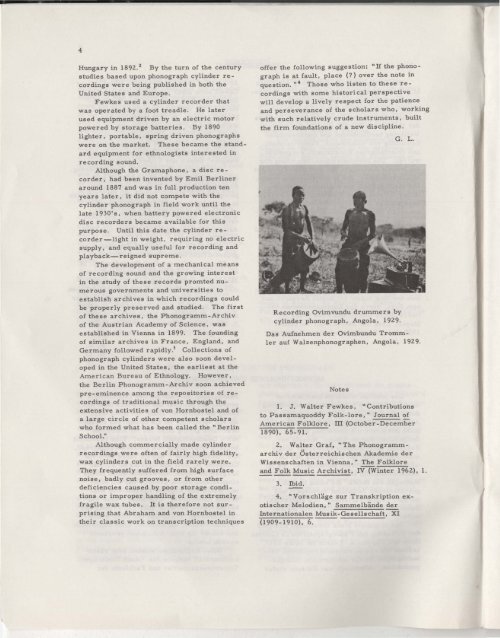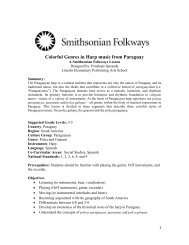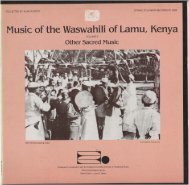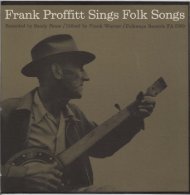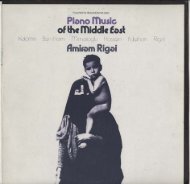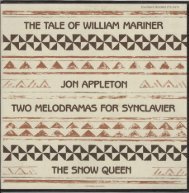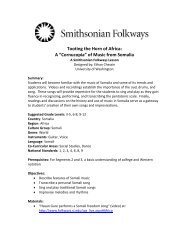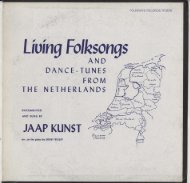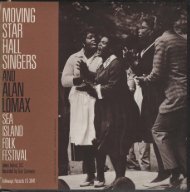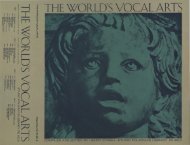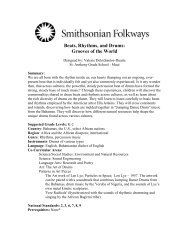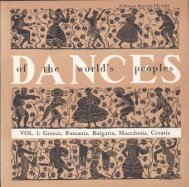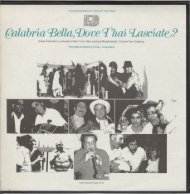4Hungary in 1892. Z By the turn of the centurystudies based upon phonograph cylinder recordingswere being published in both theUnited States and Europe.Fewkes used a cylinder recorder thatwas operated by a foot treadle. He laterused equipment driven by an electric motorpowered by storage batteries. By 1890lighter. portable. spring driven phonographswere on the market. These became the standardequipment for ethnologists interested inrecording sound.Although the Gramaphone. a disc recorder.had been invented by Emil Berlineraround 1887 and was in full production tenyears later. it did not compete with thecylinder phonograph in field work until thelate 1930·s. when battery powered electronicdisc recorders became available for thispurpose. Until this date the cylinder recorder-lightin weight. requiring no electricsupply. and equally useful for recording andplayback-reigned supreme.The development of a mechanical meansof recording sound and the growing interestin the study of these records promted numerousgovernments and universities toestablish archives in which recordings couldbe properly preserved and studied. The firstof these archives. the Phonogramm-Archivof the Austrian Academy of Science. wasestablished in Vienna in 1899. The foundingof similar archives in France. England. andGermany followed rapidly.3 Collections ofphonograph cylinders were also soon developedin the United States. the earliest at theAmerican Bureau of Ethnology. However.the Berlin Phonogramm-Archiv soon achievedpre-eminence among the repositories of recordingsof traditional music through theextensive activities of von Hornbostel and ofa large circle of other competent scholarswho formed what has been called the" BerlinSchool."Although commercially made cylinderrecordings were often of fairly high fidelity.wax cylinders cut in the field rarely were.They frequently suffered from high surfacenoise. badly cut grooves. or from otherdeficiencies caused by poor storage conditionsor improper handling of the extremelyfragile wax tubes. It is therefore not surprisingthat Abraham and von Hornbostel intheir classic work on transcription techniquesoffer the following suggestion: .. If the phonographis at fault. place (?) over the note inquestion. ,,4 Those who listen to these recordingswith some historical perspectivewill develop a lively respect for the patienceand perseverance of the scholars who. workingwith such relatively crude instruments. builtthe firm foundations of a new discipline.Recording OvimVundu drummers bycylinder phonograph. Angola. 1929.G. L.Das Aufnehmen der Ovimbundu Trommlerauf Walzenphonographen. Angola. 1929.Notes1. J. Walter Fewkes. .. Contributionsto Passamaquoddy Folk-lore." Journal ofAmerican Folklore. III (October -December1890). 65-91.2. Walter Graf ... The Phonogrammarchivder Osterreichischen Akademie derWissenschaften in Vienna." The Folkloreand Folk Music Archivist. IV (Winter 1962). 1.3. Ibid.4. "VorschHige zur Transkription exotischerMelodien." Sammelbande derInternationalen Musik-Gesellschaft. XI(1909-1910). 6.
5Vergleichenden Musikwissenschaft nahmenschnell den Vorteil des neuen Kunstmittelswahr, das die Aufbewahrung von Klang undGediusch ermoglichte. Von nun an konnteman mundlich uberlieferte Musik im Feldaufnehmen und spater, dank der mechanischenWiederholungsmoglichkeit, aufs Genauestestudieren. Es scheint, dass der amerikanischeAnthropologe J. Walter Fewkes alserster das neue Gerat anwandte, und zwarfur Feldaufnahmen der PassamaquoddyIndianer im Jahre 1889 1 • In Europa nahmBela Vikar 1892 in Ungarn Volkslieder auf z •Schon urn die Jahrhundertwende wurden sowohlin den Vereinigten Staaten wie in Europawissenschaftliche Untersuchungen vero££entlicht,die sich auf phonographische Walzenaufnahrnenstutzten.Das von Fewkes bei seinen ersten Aufnahmenbenutzte Modell wurde mit einemFusspedal betrieben. Spater benutzte erein Gerat, das von einem aus starken Batteriengespeisten elektrischen Motor angetriebenwurde. Schon 1890 konnten leichtere ,tragbare und von Federn betriebene Phonographengekauft werden. Solche Apparatewurden bald allgemein von allen Ethnologenangewandt, die ir gendwelche Aufnahmenmachen wollten.Obgleich schon urn 1887 das "Gramaphone",ein Platten-Aufnahmegerat, vonEmil Berliner erfunden und zehn Jahrespater serienweise hergestellt wordenwar, konnte es er st gegen Ende der DreissigerJahre in der Feldarbeit gegen denWalzenphonographen konkurrieren, da jetztauch batteriebetriebene Plattenaufnahmegeratehergestellt wurden. Aber bis dahinwar das Walzen-Aufnahmegerat unbestrittendas beste kaufliche Instrument fUr solcheForschungsarbeit, da es leicht von Gewicht,unabhangig von elektrischem Strom undgleicherweise fur Aufnahme und Wiedergabegeeignet war.Mit der Entwicklung technischer Aufnahmeverfahrenund dem zunehmendenInteresse am Studium solcher Aufnahmenentschlossen sich mehr und mehr Regierungenund Universitaten, Archive einzurichten, indenen Phonogramme sachgemass aufbewahrtund studiert werden konnten. Das erstederartige Archiv, das Phonogramm-Archivder Osterreichischen Akademie der Wissenschaftenin Wien, wurde 1899 gegriindet.Bald folgten Griindungen entsprechenderInstitute in Frankreich, England und Deutschland3. Auch in Amerika kam es bald zur Anlagevon Sammlungen phonographischerWalzen, voran das American Bureau of Ethnology.Aber dank der Tuchtigkeit von Hornbostelsund einer grossen Gruppe kompetenterForscher, deren Zusammenwirkenunter dem Namen "Berliner Schule" bekanntgeworden ist, gewann das Berliner Phonogramm-Archivbald eine Vorrangstellungunter den Sammlungen uberlieferter Musik.Wahrend die serienmassig hergestelltenWalzenaufnahmen oft recht gute Klangtreueaufwiesen, war dies mit den wahrend derExpeditionsarbeit im Felde hergestelltenPhonogrammen selten der Fall. Sehr oftwurden diese durch starke Nebengerausche,schlecht geschnittene Rillen, oder andereMangel infolge ungiinstiger Aufbewahrungsverhaltnisseoder unkundiger Behandlungder ausserst empfindlichen Wachswalzenbeeintrachtigt. Deshalb uberrascht es nicht,dass Abraham und von Hornbostel in ihremklassischen Werk uber die Technik derTranskription folgendes vorschlagen: " ...Handelt es sich urn Fehler des Phonogramms(Schrammen, Resonanztone u. dgl.), so setzenwir ein ? uber die betre£fende Note,,4. Dermit historischem Verstandnis begabte Horerwird sich der Hochachtung fur die Geduldund Unermudlichkeit der Forscher, die mitsolch relativ primitiven Mitteln und Instrumentendie Grundlagen fur eine neue Wissenschaftlegten, kaum verschliessen konnen.AnmerkungenG . L.1. J. Walter Fewkes, "Contributions toPassamaquoddy Folk-lore", Journal ofAmerican Folklore, III, Okt. -Dez. 1890,65-91.2 . Walter Graf, "Das Phonogrammarchivder Osterreichischen Akademie derWissenschaften in Vienna", The Folkloreand Folk Music Archivist, IV, Winter 1962, 1.3. Ibid.4. "Vorschlage zur Transkription exotischerMelodien", Sammelbande der InternationalenMusik-Gesellschaft, IX, 1909-1910, 6.


